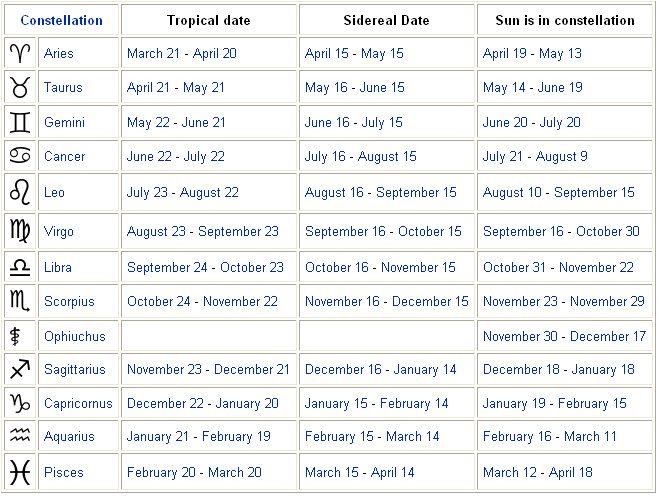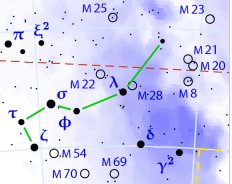Side a on the C tablet is beginning - I have suggested - at the September equinox, and by adding 396 glyphs (= days) we must go more than a year ahead. There should be 100 days from September 22 (equinox) to the end of the year and 396 - 366 = 30 could be explained as the addition of a month. At the time of rongorongo right ascension day *30 was at Hamal, the Leader of the following members of the flock: ... Strassmeier and Epping, in their Astronomishes aus Babylon, say that there its stars formed the third of the twenty-eight ecliptic constellations, - Arku-sha-rishu-ku, literally the Back of the Head of Ku, - which had been established along that great circle milleniums before our era; and Lenormant quotes, as an individual title from cuneiform inscriptions, Dil-kar, the Proclaimer of Dawn, that Jensen reads As-kar, and others Dil-gan, the Messenger of Light. George Smith inferred from the tablets that it might be the Star of the Flocks; while other Euphratean names have been Lu-lim, or Lu-nit, the Ram's Eye; and Si-mal or Si-mul, the Horn star, which came down even to late astrology as the Ram's Horn. It also was Anuv, and had its constellation's titles I-ku and I-ku-u, - by abbreviation Ku, - the Prince, or the Leading One, the Ram that led the heavenly flock, some of íts titles at a different date being applied to Capella of Auriga. Brown associates it with Aloros, the first of the ten mythical kings of Akkad anterior to the Deluge, the duration of whose reigns proportionately coincided with the distances apart of the ten chief ecliptic stars beginning with Hamal, and he deduces from this kingly title the Assyrian Ailuv, and hence the Hebrew Ayil; the other stars corresponding to the other mythical kings being Alcyone, Aldebaran, Pollux, Regulus, Spica, Antares, Algenib, Deneb Algedi, and Scheat ... ... Hotu A Matua corresponded to the last of the antediluvian kings (to Noah, to Ubardudu etc), whereas the first king up on dry Land was Ko Oto Uta - corresponding to Adam, to Alulim etc:
The precessional month down to the time when Hamal was at 0h in a way could have corresponded to the month from 18 November (when the Hawaiian priests had their '2nd ceremony' of breaking of the coconut) to their date 18 December, when - according to the Julian calendar 27 precessional days earlier than the time of rongorongo - the Sun would have reached Tara-zed the Star-striking (Falcon). Bayer's letter γ for Tarazed is formed as an upside down λ, which probably meant the dark times were in the past.
... The correspondence between the winter solstice and the kali'i rite of the Makahiki is arrived at as follows: ideally, the second ceremony of 'breaking the coconut', when the priests assemble at the temple to spot the rising of the Pleiades, coincides with the full moon (Hua tapu) of the twelfth lunar month (Welehu). In the latter eighteenth century, the Pleiades appear at sunset on 18 November. Ten days later (28 November), the Lono effigy sets off on its circuit, which lasts twenty-three days, thus bringing the god back for the climactic battle with the king on 21 December, the solstice (= Hawaiian 16 Makali'i). The correspondence is 'ideal' and only rarely achieved, since it depends on the coincidence of the full moon and the crepuscular rising of the Pleiades ...
The Coco and its fate could have been connected with day 314 (π) at the ancient time when Aldebaran had risen with the Sun at 0h. 355 ('December 21, solstice) + 27 - 68 = 314 (*NOVEMBER 10).
The distance down to Sheratan was not *30 but *27 precessional days, and the Battle of the King (at the solstice) would in Roman times have come 3 days later than at Tarazed. From the Front of the Head of Ku (γ and β Arietis) to the Back of the Head of Ku (Hamal) there were also 3 days:
And there were 270 (= 9 * 30) days from Hamal to Altair - to be compared with 273 (= 3 * 91) days from Sheratan to Altair - but Gregory XIII had omitted to correct for the effects of the precession before AD 325 (a year alluding to March 25 and the Julian equinox). ... Vainamoinen set about building a boat, but when it came to the prow and the stern, he found he needed three words in his rune that he did not know, however he sought for them. In vain he looked on the heads of the swallows, on the necks of the swans, on the backs of the geese, under the tongues of the reindeer. He found a number of words, but not those he needed. Then he thought of seeking them in the realm of Death, Tuonela, but in vain. He escaped back to the world of the living only thanks to his potent magic. He was still missing his three runes. He was then told by a shepherd to search in the mouth of Antero Vipunen, the giant ogre. The road, he was told, went over swords and sharpened axes. Ilmarinen made shoes, shirt and gloves of iron for him, but warned him that he would find the great Vipunen dead. Nevertheless, the hero went. The giant lay underground, and trees grew over his head. Vainamoinen found his way to the giant's mouth, and planted his iron staff in it. The giant awoke and suddenly opened his huge mouth. Vainamoinen slipped into it and was swallowed. As soon as he reached the enormous stomach, he thought of getting out. He built himself a raft and floated on it up and down inside the giant. The giant felt tickled and told him in many and no uncertain words where he might go, but he did not yield any runes. Then Vainamoinen built a smithy and began to hammer his iron on an anvil, torturing the entrails of Vipunen, who howled out magic songs to curse him away. But Vainamoinen said, thank you, he was very comfortable and would not go unless he got the secret words. Then Vipunen at last unlocked the treasure of his powerful runes. Many days and nights he sang, and the sun and the moon and the waves of the sea and the waterfalls stood still to hear him. Vainamoinen treasured them all and finally agreed to come out. Vipunen opened his great jaws, and the hero issued forth to go and build his boat at last ... Possibly the Pope wished to avoid the Dragon (Thuban, the old star at the pole) and took the opportunity to let the Front of the Head of Ku be at the beginning of his equinoctial year - the Serpent on his couch up at the north pole resembled the Serpent of Eden.
... Snorri Sterluson explains why 'Frodi's grist' is a kenning for gold. Frodi ruled during a peaceful and productive period, contemporaneous with Augustus's Pax Romana and the birth of Christ; hence the kenning. There were neither thieves nor robbers during this period, 'so that a gold ring lay long on Jalang's heath'. Snorri continues his account with the legend of the mill beyond what is told in the song: The girls' grinding produced an army hostile to Frodi. On the very day of the girls' predictions, the sea-king, Musing (Son of the Mouse), landed on the Danish shore, killed Frodi, and took away Grotti and the women on his ship. The girls were bidden to grind out salt on the mill. At midnight they asked for further instructions. 'Keep grinding', he told them. Then they ground with such vigor that the ship sank. Water poured into the eye of the mill, creating the maelstroem of the sea. Therefore the sea was salt. Incidentally, the mill was given a kenning, Serpent's Couch ... Once upon a time there had been a place for the Serpent and his Tree:
According to the Chinese there was a serpent closely intertwined with a turtle, but its head was not high up in the north but down in the south, at the South Dipper and immediately after the Winnowing Basket (Nash, γ Sagittarii):
... The South Dipper is a part of the Sagittarius constellation which resembles the Big Dipper in Ursa Major:
|
||||||||||||||||||||||||||||||||||||||||||||||||||||||||||||||||||||||||||||||||||||||||||||||||||||||||||||||||||||||||||||||||||||||||||||||||||||||||||||||||||||||||||||||||||||||||||||||||||||||||||||||||||||||||||||||||||||||||













